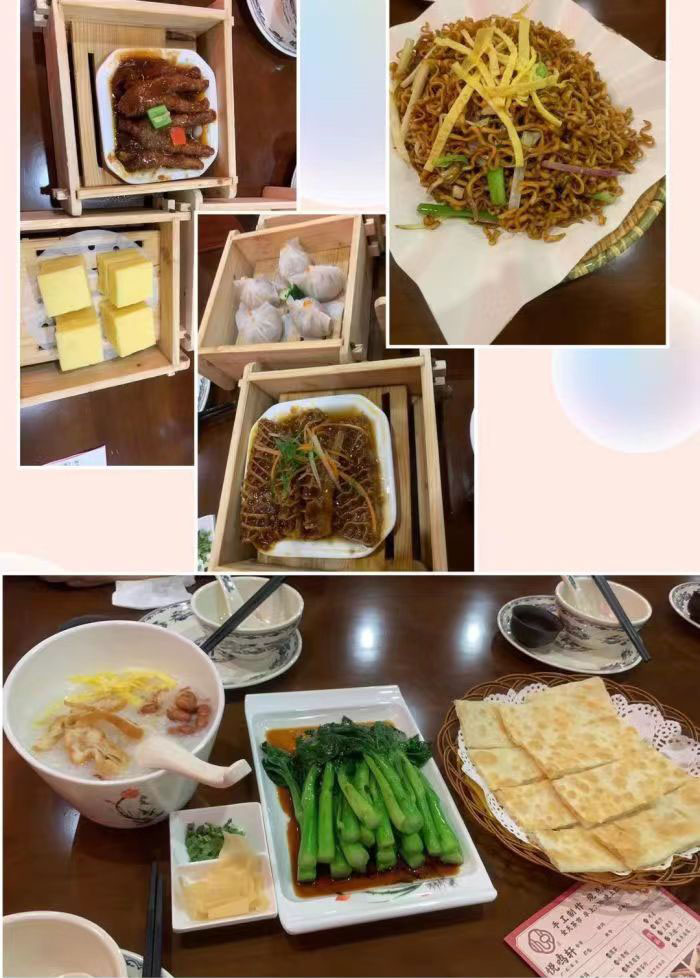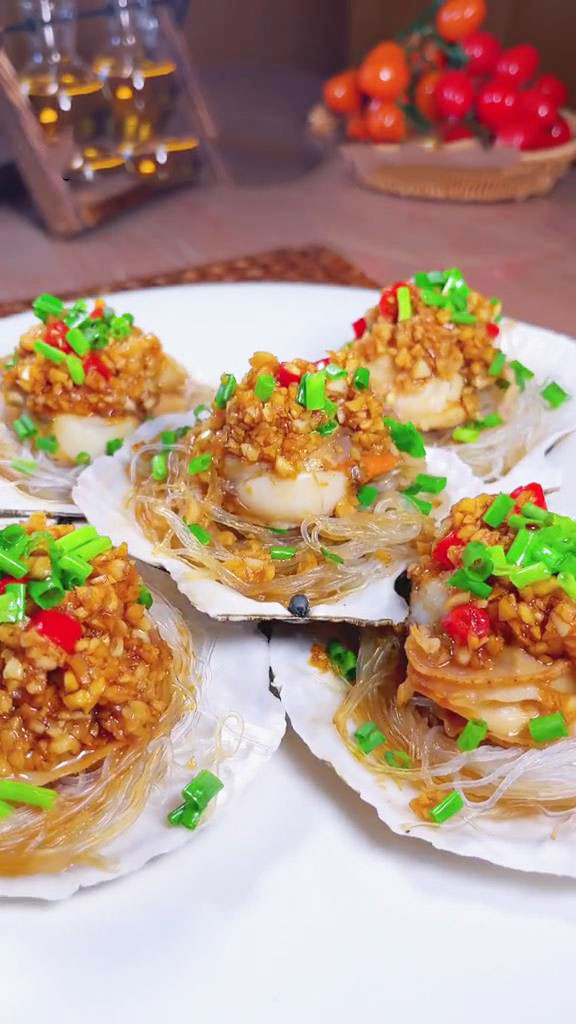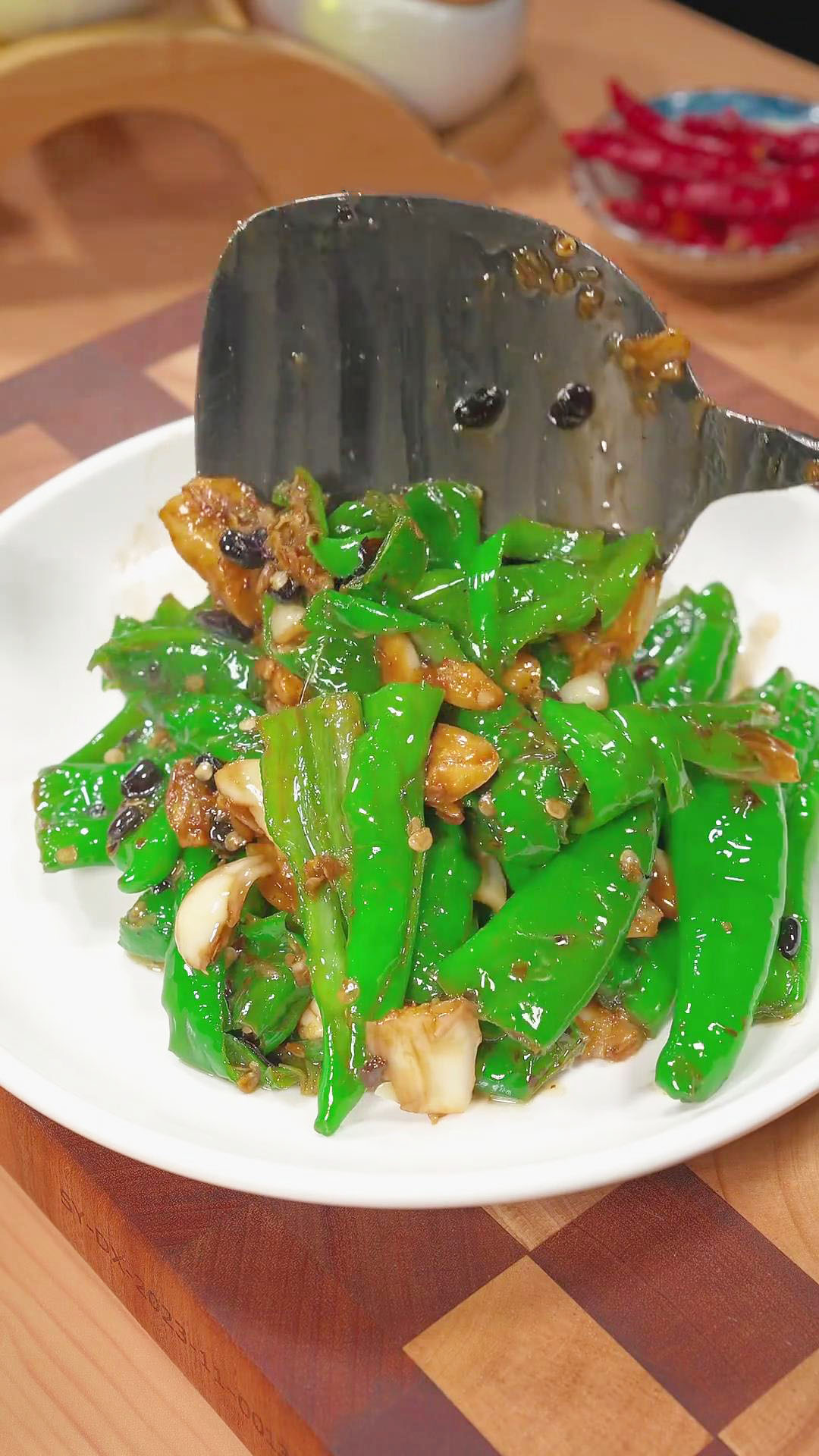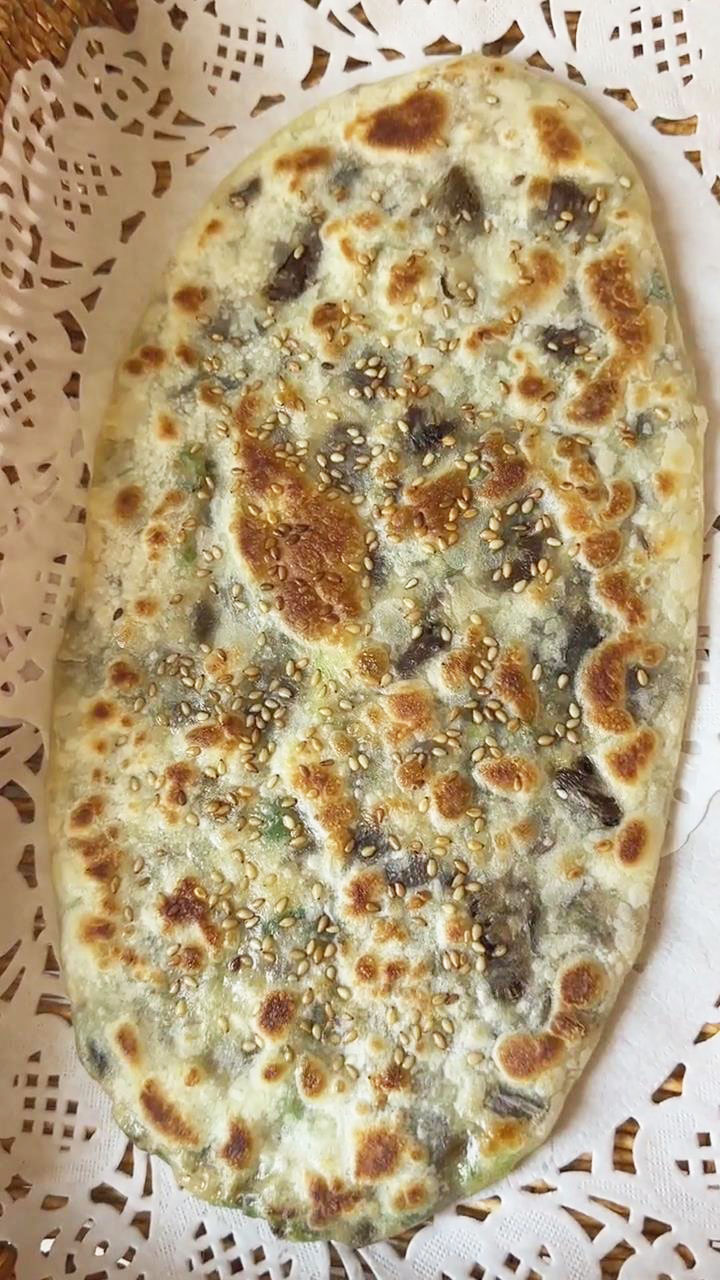If you want the Chinese style to have brunch, you should go to a dim sum restaurant with friends and family. Dim Sum restaurants are a crowd-pleaser because of their fast service and extensive selection of tea, savory dishes, and sweet desserts.
When you enter a dim sum restaurant, you will notice several bamboo steamer baskets and trolleys going from table to table.
The way of ordering is quite different from a typical restaurant since you will be given a menu card to place an order. If you visit a dim sum restaurant anywhere in the world, you will experience these unique aspects. If you find this new to you, don’t worry! It is what every dim sum newbie learns from the beginning.
So, if it is your first time going to a dim sum restaurant and you do not have a clue about what to do, you have come to the right place.
In this dim sum guide, I share in detail how to order at dim sum restaurants and what menu items to expect. It is also a good idea to learn about basic dim sum etiquette, which is all outlined below so that you can get accustomed to the Chinese way.
What Is Dim Sum?
In translation, dim sum means “touch the heart.” When we talk about dim sum, it is not exactly a specific dish but a type of meal of the day. Dim sum is usually for breakfast, lunch, or brunch.
View this post on Instagram
It is well-known for its variety of dishes served on small plates and bamboo baskets. Moreover, you can’t leave dim sum without having tea, such as oolong tea and green tea. In fact, dim sum starts with tea before having a savory or sweet dim sum dish.
In a nutshell, the types of dim sum dishes you can expect are pan-fried, deep-fried, steamed, boiled, or baked, to name a few. It is the best place to have a bit of everything, from rolls to dumplings and bao buns. To cap off the meal, you can order various sweet cakes and desserts.
5 Steps On How To Order Dim Sum
So, you have arrived at your chosen dim sum restaurant and wonder what to do next. Do not fret! I have listed the steps on what typically happens at dim sum restaurants. Below is the common order on how to order dim sum, from starting with tea to waiting for the dishes to be served.
- Wait for a staff member to bring you to your table. Some dim sum restaurants have a ticketing system where you must get a number and wait to be called for a seat.
- Once you are seated, you will be asked about your tea preference. Tea helps aid digestion and cleanse the pallet. Generally, tea is best paired with dim sum dishes and is often served before and during a meal.
- Afterward, you will be given a menu card where you can mark the dishes you like and indicate the number of plates to order. You’ll be given a pen or pencil to do this. Then, the menu card is given to the server to process your order.
- Aside from ordering via the menu card, you can also order from pushcarts or trolleys with bamboo baskets. There’s always a person pushing the carts from table to table. Let them know if you see something you like and they will add it to your menu card.
- Enjoy your tea while waiting for the dishes to be served. Don’t forget to order dessert and eat the meals while hot and fresh.
What Is The Tea Menu?
There are several tea options available, but I will focus on the most common ones. Normally, tea is served until you tell them to stop. You can have tea before, during, and after a meal. Here are some examples of teas to order:
- Black Tea (红茶)
- Chrysanthemum Tea (菊花茶)
- Oolong Tea (乌龙茶)
- Green Tea (綠茶)
- Jasmine Tea (茉莉花茶)
- Shoumei (寿眉)
- Guk Bo
What Is The Dim Sum Menu? (Dim Sum types)
Did you know that there are about 2,000 dim sum dishes? With the many variations created, keeping track of the types of dim sum dishes available is quite challenging. In general, you can order different kinds of dumplings, bao buns, rolls, meats, seafood, vegetables, cakes, and desserts on the menu.
Here are 20 of the most popular dim sum dishes worth ordering:
- Har Gow – This is also called shrimp dumplings. It is a dim sum staple made with shrimp, bamboo shoots, and seasonings wrapped in a starch-based dough. It gets its translucent and chewy skin from the mix of starches, including wheat starch, cornstarch, or tapioca starch.
- Potstickers– Potsticker or guotie is a type of dumpling that is steam-fried. First, it is pan-fried with a bit of oil until light brown. Then, a small amount of water is added for steaming. In this way, you get crispy skin and a moist filling. It can be filled with minced pork, chicken, tofu, or shrimp.
- Siu Mai– Siu Mai is a Chinese pork dumpling made with minced pork, mushrooms, green onions, and ginger. Sometimes, shrimp is added, and when it is, it’s referred to as Shrimp Shumai. It is also called shaomai or shumai and is recognizable for its open purse-shaped appearance with an orange dot at the center. The orange dot is made of crab roe or carrot.
- Wonton– Wonton is a type of dumpling that uses a thinner and less elastic dough wrapper and a lesser amount of filling. It is commonly served as wonton soup or wonton noodle soup, and can also be enjoyed spicy, such as wonton in chili oil. As for the filling, it is a mix of ground pork and shrimp. Wontons come in different shapes since they can be folded in five ways: Ingot Wonton, Sichuan Chaoshou, Bow Tie Wonton, Fish Wonton, and One Step Wonton.
- Xiao Long Bao – Xiao long bao is not exactly a dumpling but a type of bao bun. It is different from a dumpling since the dough is much thicker and is usually made of leavened dough. The dough is made of yeast, wheat flour, sugar, and water. In translation, xiaolongbao means soup dumpling or “little caged bao” in Chinese.
- Cha Siu Bao– Generally, cha siu bao is a BBQ pork stuffed bun filled with char siu or barbecue-flavored filling. The dough is similar to bread, which is moist and spongy. It can be steamed or baked with minimal differences in color and taste.
- Lian Rong Bao– This bao is more of a snack since it is stuffed with sweet lotus seed paste. It is also called a lotus seed bun. The lotus seed paste or lian rong is made with lotus seeds that are cooked with sugar, oil, and maltose.
- Liu Sha Bao– Liu Sha Bao or molten egg custard bun is a soft and fluffy dessert bun with a salted yolk filling. The filling is usually a combination of salted egg yolks, cornstarch, milk powder, gelatin, lard, butter, and white sugar.
- Tofu Skin Roll – Tofu skin roll has several varieties, depending on how it is cooked. For instance, steamed tofu skin roll is called sin juk gyun, while fried tofu skin roll is called fu pei gyun. The skin is made from bean curd or fried tofu skin. It is typically filled with chicken, shrimp, bamboo shoots, tofu, carrots, scallions, and bean sprouts, to name a few.
- Spring Roll – Spring rolls are commonly filled with vegetables such as cabbage and bean sprouts. For meat variations, chicken spring roll is the most popular one. It can be pan-fried or deep-fried and is best paired with a dipping sauce.
- Rice Noodle Roll – This type of roll is also known as cheong fun (肠粉) or steamed rice roll. It is made with rice noodle sheets made from rice flour and tapioca and is filled with shrimp, green onions, vegetables, pork, or beef.
- Braised Chicken Feet– Chicken feet or feng zhao is a classic dim sum dish that is braised and cooked with fermented black beans. It has a rich umami flavor with a gelatinous texture. The chicken feet are usually cleaned and blanched before braising in the mix of seasonings. To eat chicken feet, you normally have to chew the skin off and suck the juicy parts. Take note that you will not eat the chicken bones.
- Steamed Spare Ribs With Black Bean Sauce– Another dim sum black bean recipe is steamed spare ribs with black bean sauce. In this dish, the pork ribs are usually cut into small chunks and marinated with a savory sauce. Then, the ribs are steamed before adding the black bean sauce and peppers.
- Lo Mai Gai – You may also see this in the menu as glutinous rice chicken or sticky rice chicken. It is a ball of glutinous rice wrapped in a dried lotus leaf. The rice is filled with a variety of ingredients, including chicken, Chinese sausage, mushrooms, salted egg, shrimp, and vegetables. Moreover, the rice itself is also flavored with seasonings such as oyster sauce, light soy sauce, and oil. After wrapping the ball of rice with a dried lotus leaf, it is then steamed to absorb the flavors fully.
- Zhaliang– Zhaliang or cha leung is a fried dough rice noodle roll. It is made with Chinese fried dough called youtiao that is wrapped with rice noodle rolls. It is drizzled with soy sauce or hoisin sauce and sprinkled with sesame seeds and scallions.
- Sesame Balls– Sesame balls are deep-fried sticky rice balls stuffed with a sweet paste and rolled in sesame seeds. It has that satisfying crunch on the outside while you indulge in a soft and sweet filling. The dough is made with sticky rice flour or glutinous rice flour mixed with sugar and boiling water. The sweet filling can be lotus seed paste or red bean paste.
- Ma Lai Gao – Ma lai gao is a Cantonese sponge cake, also called Malay sponge cake or Malay cake. It is a steamed cake made with brown and white sugar, yeast, flour, and tapioca starch. This sweet dessert is fluffy and springy and has the caramel-like taste of brown sugar.
- Mango Pudding– Dim sum carts often serve mango pudding as a dessert. It is fruity, creamy, and silky. The ingredients typically include fresh mangoes, milk, gelatin, and sugar.
- Egg Tart – Egg tart is also a popular dim sum dessert which is a type of custard tart. It has a soft but firm crust that carries the egg custard at the center. You may also refer to this dessert as dan tat in Cantonese. The filling is made of eggs, sugar, milk, and sometimes vanilla extract.
What Is The Basic Dim Sum Etiquette?
If it is your first time eating at a dim sum restaurant, you should know there are a few simple dim sum etiquette worth practicing. Learning about the basic dim sum etiquette is best, especially if you are not accustomed to the Chinese tradition.
It is not entirely mandatory to act exactly how they do it. However, it will surely be highly appreciated by the restaurant staff or locals. Moreover, it will help you avoid things that may seem rude or disrespectful to Chinese culture.
Without further ado, here are a few things to keep in mind before going to a dim sum restaurant.
- Chopsticks are normally used at dim sum restaurants. If really needed, you can ask for a fork to help you eat the dish.
- When putting down chopsticks, do not stick them onto the rice. This manner is deemed disrespectful as it is only done in funerals. You can simply put the chopsticks on the chopstick rest or next to your bowl or plate.
- When you are done, place the chopsticks resting on the bowl. This indicates that you are done with the meal.
- When it comes to tea, you can be polite by pouring tea for your party before your own. If someone else is pouring tea for you, you can thank them by tapping your two fingers on the table. This hand gesture is a common way of expressing gratitude without saying the words “thank you”.
- Traditionally, the youngest person at the table pours tea for everyone before their own. The order of pouring starts from the eldest to the youngest.
- If the teapot is already empty and you want a refill, turn the pot cover upside down or leave it open. This will let the server know that you want a refill.
- When eating chicken feet or other foods with bones, make sure to eat them quietly and remove them with chopsticks. You will be given a plate for shells and bones.
- If you want rice with a dish, don’t be afraid to ask for steamed rice. They can give rice upon request.
- Use a serving or sharing utensil when picking up food for others. Do not use your own chopsticks as this is considered impolite.
- Do not fill your plate with too much serving. Take one piece at a time and return the serving plate to the center of the table for others to try. You can always order another plate of the dish if you wish to have some more.
- If there is a last piece of food on the plate, make sure to offer it first to others before taking it for yourself.
- Don’t forget to tip. Although some dim sum restaurants require you to pay at a cashier and not at the table, it is still advisable that you leave a tip on the table for the person who served you and the person pushing the pushcarts. However, it’s essential to note that in China, tipping is generally not expected or required. In Chinese culture, tipping is not a common practice, and it may even be politely declined in some situations. So, if you’re eating dim sum in China, you don’t need to worry about leaving a tip as it is not part of the local customs.
- Lastly, don’t forget the card dance. It is polite to offer to pay for the bill. Alternatively, you can offer to split the bill for a simpler payment process.
Final Thoughts
Which dim sum dish is your favorite? Are there any tips and recommendations you’d like to share with fellow dim sum lovers? Write them below in the comments section.
If you find this guide useful, don’t forget to share them with others. To learn more about dim sum, read my guide Bao Vs Dumpling Vs Dimsum. Follow Kitchen Misadventures on Instagram and Tiktok for more food guides!




